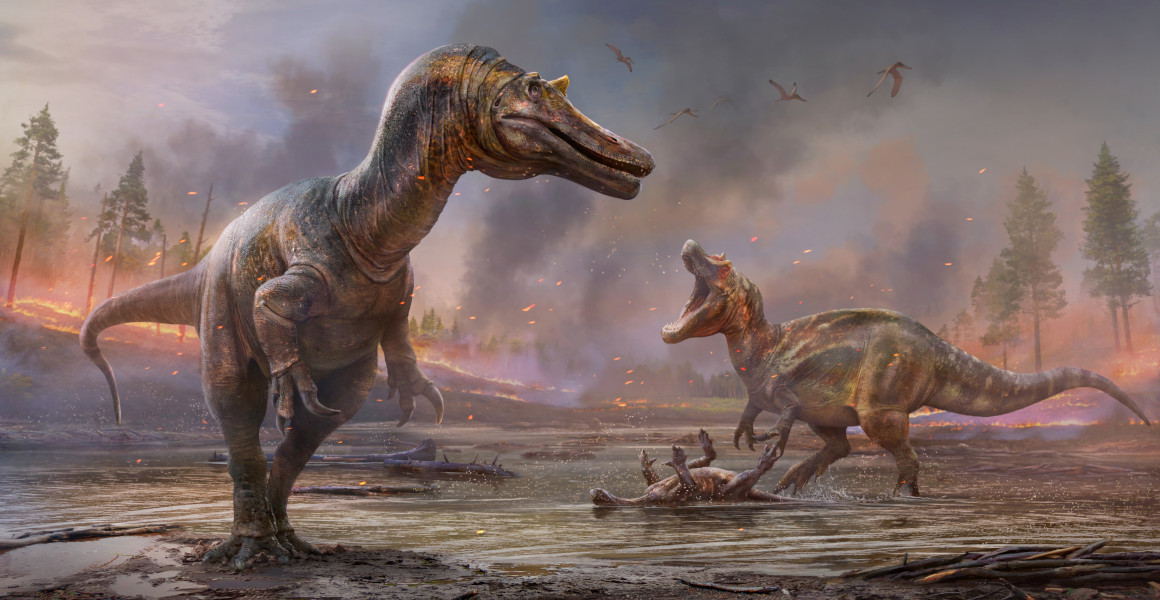A new species of dromaeosaurid (raptor) dinosaur — Boreonykus certekorum — that thrived in the cold has been discovered in a remote part of Canada.

A pair of Boreonykus certekorum dinosaurs eating a Triceratops. Image credit: University of New England.
Dr. Phil Bell from the University of New England and Dr. Philip Currie from the University of Alberta, announced the discovery of Boreonykus certekorum this week in the Journal of Vertebrate Paleontology.
According to the team, this new dinosaur lived about 72 million years ago (Late Cretaceous epoch).

It had killer claws and was a relative of Velociraptor, a small carnivorous dinosaur made famous by the Jurassic Park movies.
The fossilized remains of the ancient animal were unearthed from the Wapiti Formation, near the city of Grande Prairie, central-western Alberta.
“The bones we have show it would have had big hand and foot claws, a real killing claw,” the paleontologists said.
“The claws would have been used to hunt down prey.”

“We have a handful of teeth that are like serrated steak knives. These would have been pretty savage predators.”
The scientists estimate the creature was about 13 feet (2 m) long and as tall as a dog.
“It skin was probably feathered to keep the dinosaur warm in the cold dark winters in north Canada,” Dr. Bell and Dr. Currie said.

The discovery of Boreonykus certekorum is significant as it fills an important gap in how the raptors moved and adapted to the environment.
“Its closest ancestors were from Mongolia, so this species probably crossed the land bridge from northern Asia to North America,” the scientists said.
Source: sci.news








